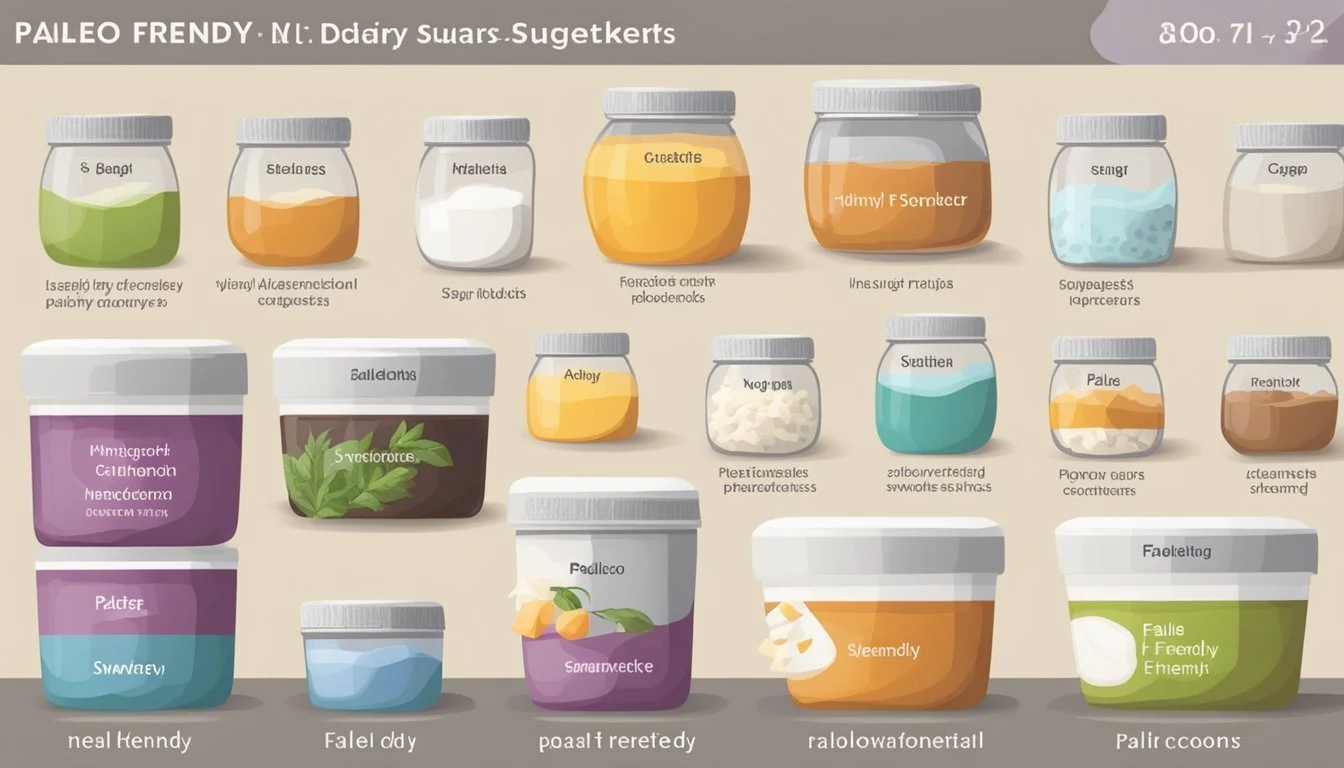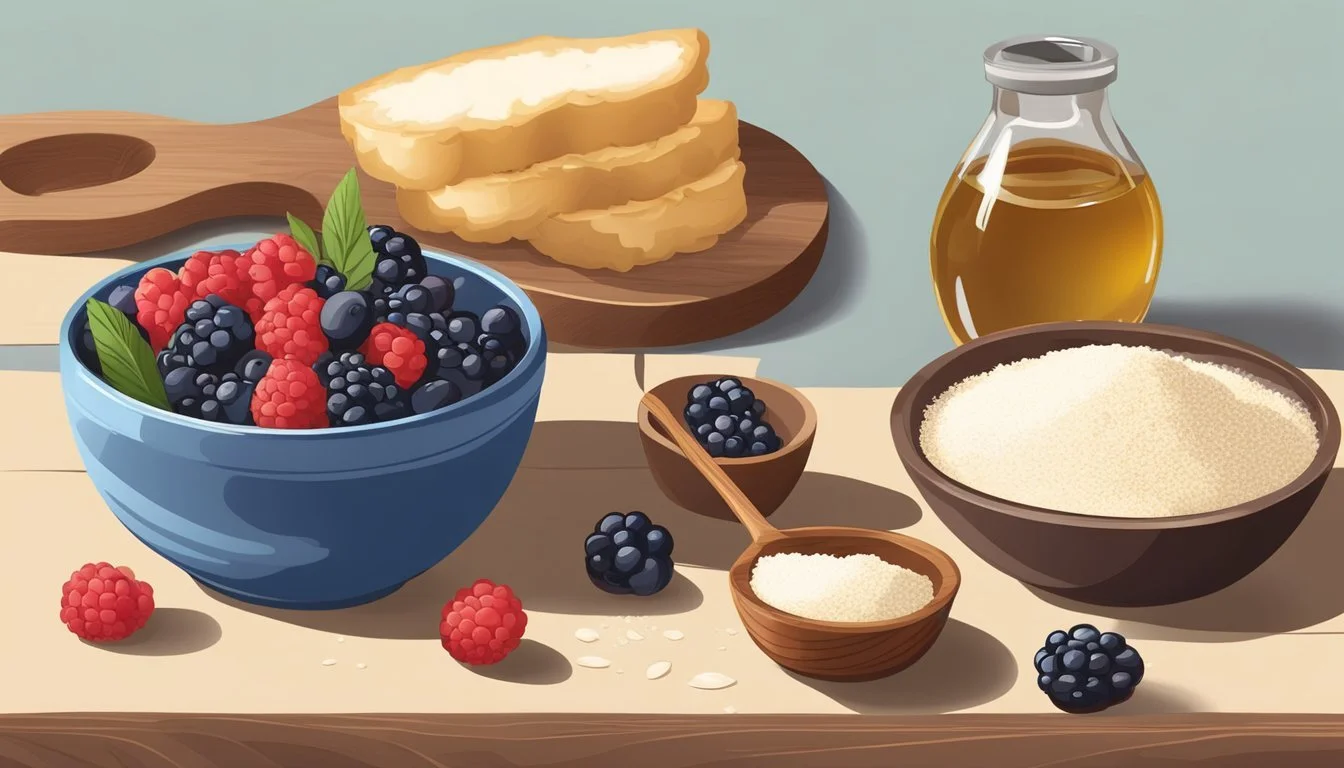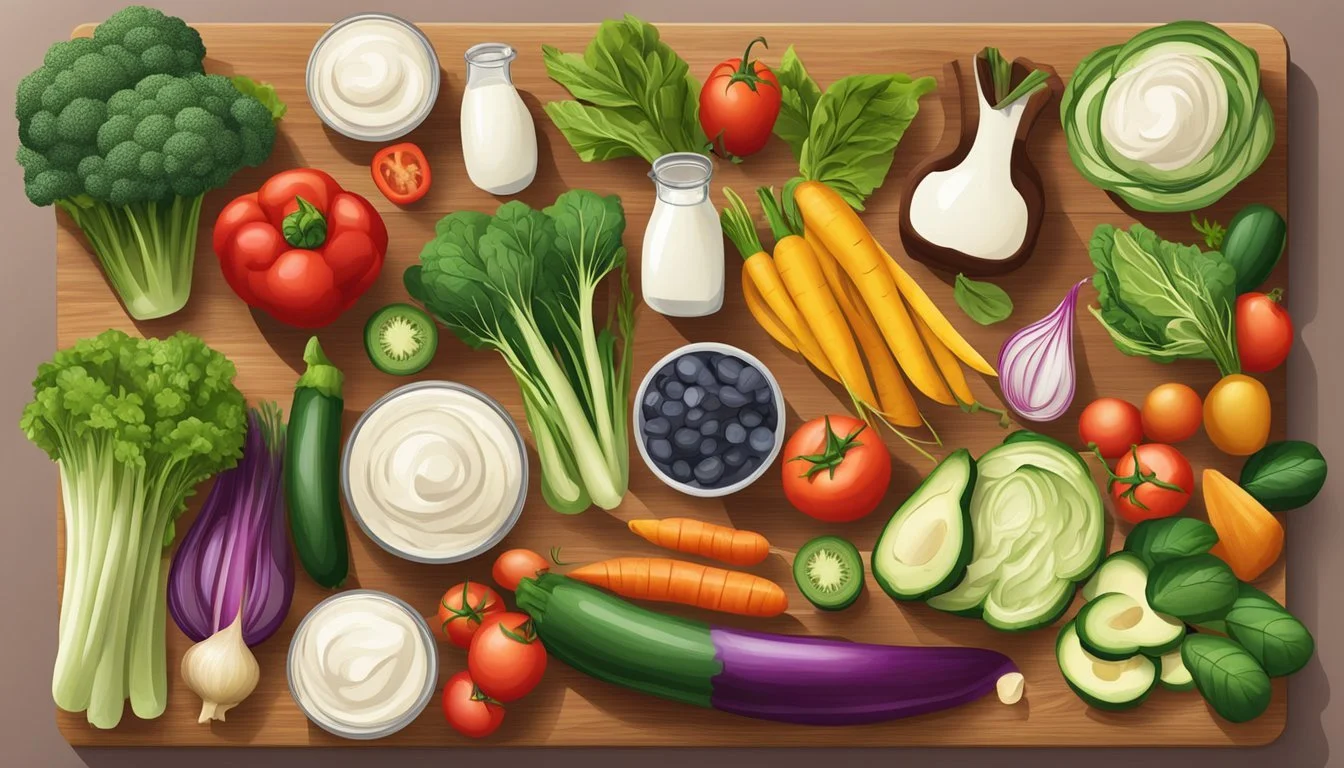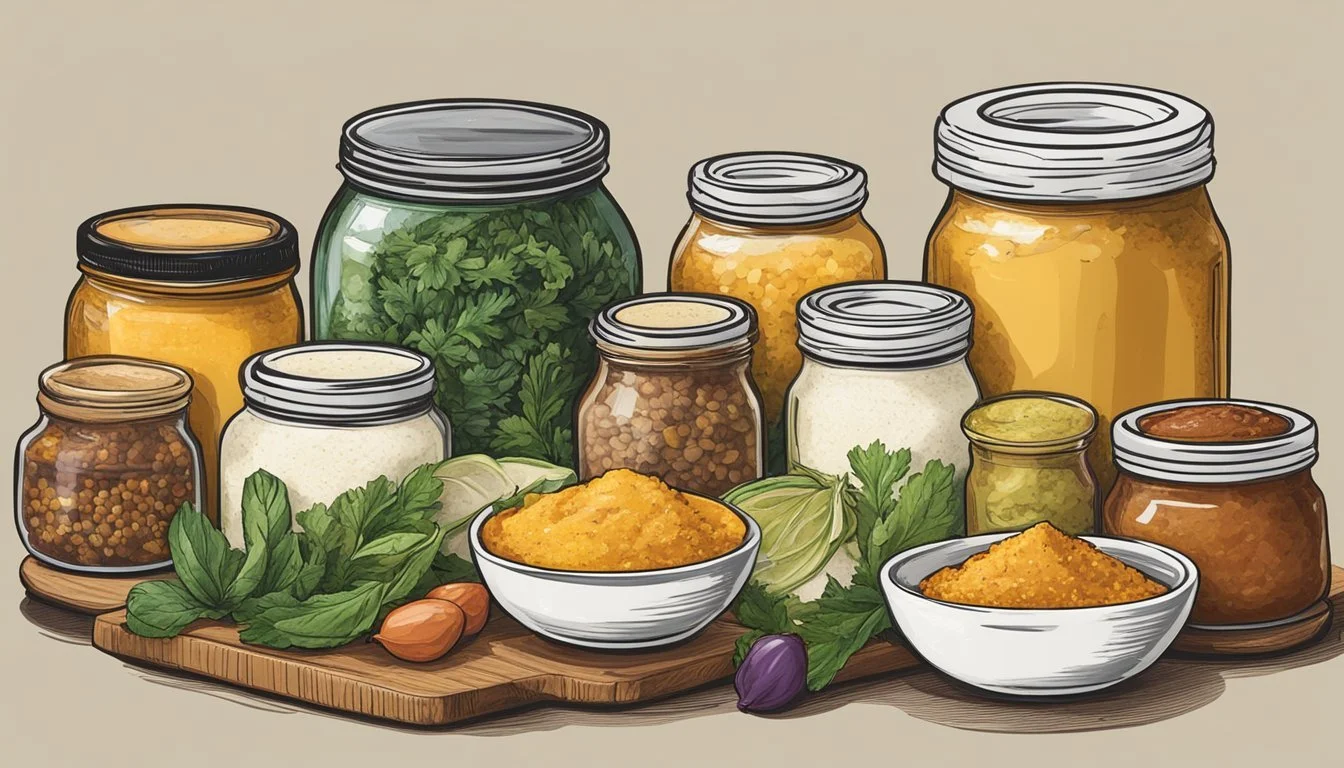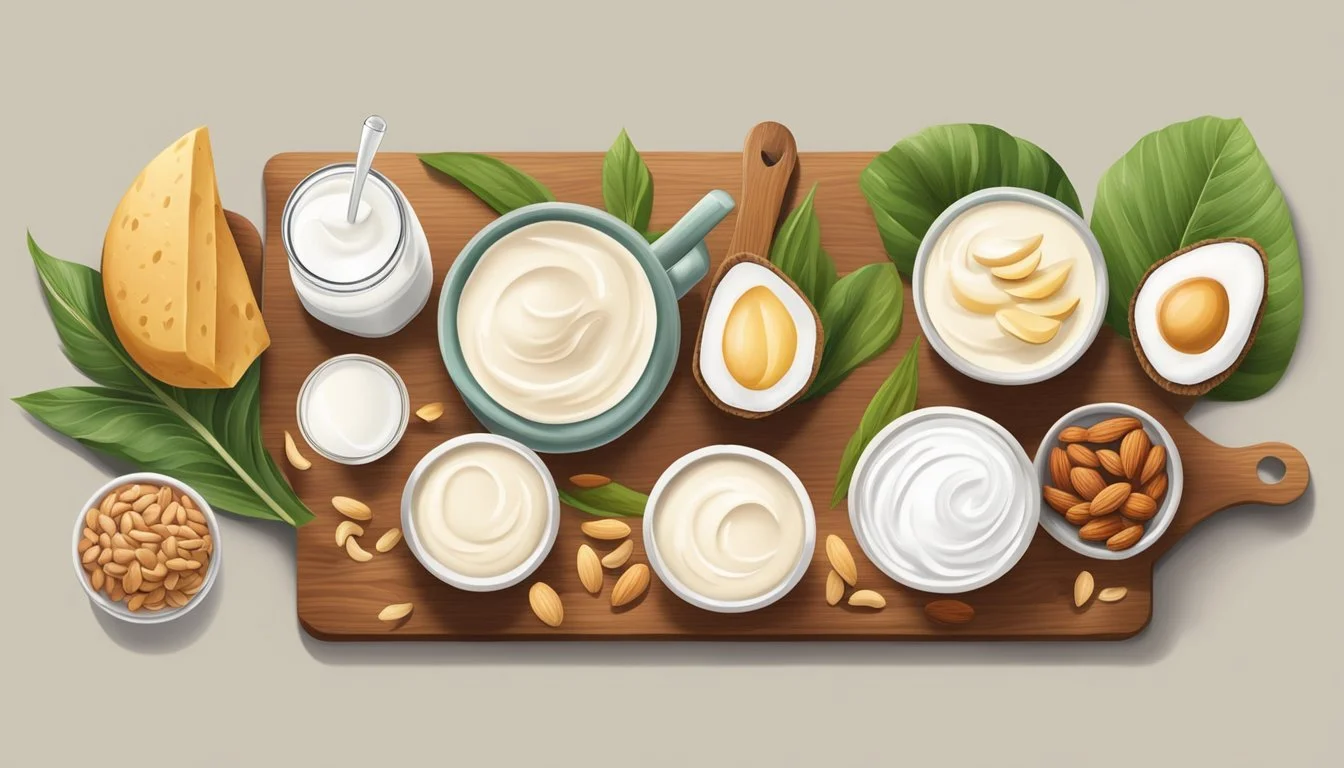The Best Paleo Diet Food Swaps for Dairy
Simple Substitutes for a Healthier Lifestyle
Adopting a paleo diet often involves rethinking one's relationship with dairy products. While dairy is a staple in many diets, paleo nutrition principles exclude it based on the philosophy of emulating the eating patterns of our ancestors. This exclusion is rooted in the notion that dairy was not a component of the human diet before the advent of agriculture. As a result, individuals following the paleo lifestyle seek alternative sources to fulfill their nutritional needs without relying on milk, cheese, yogurt, and ice cream.
The quest for suitable dairy replacements has led to a variety of paleo-friendly solutions that maintain the richness and versatility that dairy provides. These alternatives not only align with the dietary constraints of paleo eating but also cater to those with lactose intolerance or dairy sensitivities. They can successfully mimic the texture and flavor profiles of traditional dairy in various recipes, ensuring that the transition to dairy-free does not sacrifice enjoyment or variety in one's diet.
Understanding Paleo Diet Basics
The Paleo Diet emulates the eating habits of our hunter-gatherer ancestors, focusing on whole foods and excluding modern agricultural products.
What is Paleo?
Paleo, short for Paleolithic, refers to the era in human history that predates modern farming and processed foods. The paleo diet is based on the presumed diet of humans during this time — a period when people ate what they could hunt or gather.
Characteristics of the Paleo Diet:
Foods included: Fruits, vegetables, lean meats, fish, eggs, nuts, and seeds
Foods avoided: Grains, legumes, and dairy products, as they were not part of the pre-agricultural menu
Emphasis on eating "real food" that is unprocessed and free from artificial additives
Core Principles of Paleo
The paleo diet's core principles revolve around eating whole foods that provide nutritional benefits and are in their natural or minimally processed states. The diet contrasts strongly with the standard American diet, which often includes highly processed foods, sugars, and refined grains.
Guidelines of Paleo Principles:
Prioritize Consumption: Emphasizes nutrient-dense foods that would have been available in the Paleolithic Era
Exclude Modern Additions: Grains, dairy, and legumes are excluded as they are seen as products of modern agriculture
Focus on Quality: Advocates for choosing grass-fed and organic options where possible to maximize nutrient intake and avoid toxins present in conventional farming practices
Dairy Alternatives in Paleo Diet
When individuals on the Paleo diet seek to avoid dairy, a variety of non-dairy milk and cream substitutes offer nutritional benefits, flavors, and textural qualities that complement different culinary uses.
Nut Milks and Their Benefits
Nut milks such as almond, cashew, and other varieties provide important nutritional content, including healthy fats and proteins. Almond milk, known for its light and nutty flavor, is a popular choice for smoothies, cereals, and baking. Cashew milk boasts a creamy consistency and is often utilized in creamy soups and sauces.
Almond Milk: Low in calories, high in Vitamin E
Cashew Milk: Rich, creamy texture ideal for recipes requiring smoothness
Coconut-Based Substitutes
Coconut plays a major role in Paleo-friendly dairy alternatives. Coconut milk can act as a milk or cream substitute in recipes due to its rich texture and unique flavor. Coconut cream, derived from this milk, is thicker and can be used in desserts or as a cream substitute. Coconut yogurt is another alternative offering the benefits of probiotics without the dairy content.
Coconut Milk: Versatile for both sweet and savory dishes
Coconut Cream: Best for thickening sauces and desserts
Coconut Yogurt: Offers probiotics for gut health
Seed and Other Non-Dairy Milks
In addition to nut and coconut sources, milks made from seeds or grains are also acceptable Paleo options, depending on their processing and content. Chia seeds can be used to make a gel that acts as a thickener, similar to milk, and provides omega-3s. However, milk substitutes like soy milk and rice milk are not considered Paleo due to the legume status of soy and the processing involved in creating rice milk. Oat milk is also excluded because oats are a grain.
Chia Seed Gel: A thickening agent that adds omega-3 fatty acids
Non-Paleo Options: Soy milk, rice milk, oat milk are typically avoided in Paleo diet
Healthy Cooking Fats and Oils
In the Paleo diet, dairy is commonly replaced with plant-based oils and fats that are more aligned with this eating style. The right choice of cooking fats can provide both flavor and health benefits.
Replacing Butter and Ghee
Butter and ghee are traditional cooking fats, but they are not compliant with the Paleo diet due to their dairy content. Suitable alternatives include:
Coconut oil: With a high content of saturated fats, it remains stable under heat. Use it for baking or frying.
Lard: Appropriate for high-temperature cooking, lard provides a taste that is closer to what one might expect from butter.
Duck and chicken fat: These animal fats offer rich flavors and are suitable for Paleo cooking.
Cooking with Plant-Based Oils
The choice of plant-based oils is crucial for maintaining a healthy Paleo diet. Here are some suitable options:
Olive oil: Ideal for sautéing and dressings, it's rich in monounsaturated fats and antioxidants. Choose extra virgin olive oil for its purity and health benefits.
Avocado oil: With a high smoke point, it's excellent for high-heat cooking. It's also abundant in monounsaturated fats.
Avoid oils with high omega-6 fatty acid content or those processed with chemical solvents, as these do not align with the goals of a healthy, whole-food-based Paleo diet.
Swapping Sugars and Sweeteners
Adopting a Paleo diet involves changing one's approach to sugars and sweeteners, with a focus on natural and less refined options. This evolution from processed sugars to natural alternatives can have a positive impact on health.
Natural Sweeteners Overview
Natural sweeteners are central to the Paleo approach, emphasizing whole, unrefined options. Raw honey and pure maple syrup are commonly recommended, as they undergo less processing and retain more nutrients. Coconut sugar, derived from sap, is another Paleo-friendly choice, offering a lower glycemic index compared to conventional sugar.
Raw Honey: Antioxidant-rich and with natural enzymes.
Pure Maple Syrup: Contains minerals like zinc and manganese.
Coconut Sugar: Features a modest amount of minerals and fiber.
These sweeteners not only provide a touch of sweetness but also contribute to the nutritional profile of one's diet when used judiciously.
Finding the Right Balance
While natural sweeteners are better aligned with the Paleo diet, they should be utilized thoughtfully. The key is moderation, ensuring that sweeteners enhance rather than dominate the flavor profile of a dish. It is crucial for individuals to monitor their overall sugar intake, even from natural sources, to maintain a balanced and health-conscious diet.
Moderation: Avoid excessive use of any sweeteners.
Flavor Enhancement: Use sweeteners to complement other ingredients, not overwhelm them.
The guiding principle in the Paleo diet is the consumption of foods in their most natural state, which translates to a prudent use of natural sweeteners.
Paleo-Friendly Baking Ingredients
When adhering to a Paleo diet, traditional baking ingredients like wheat flour and certain leavening agents are off the table. However, numerous paleo-friendly substitutes allow individuals to enjoy baked goods without compromising their dietary choices.
Flour Alternatives
Almond Flour: A staple in paleo baking, almond flour is ground almonds, which provides a gluten-free and grain-free base for breads and other baked goods.
Coconut Flour: Made from dried coconut, this flour is highly absorbent and lends a light, airy texture to baked goods, though it typically requires more eggs to bind.
Other popular Paleo flour alternatives include flours made from tapioca, arrowroot, and cassava, which are also gluten-free and fit within the Paleo diet parameters.
Leavening and Binding Agents
Eggs: Eggs serve as a primary binding agent in paleo baking, helping to add structure and moisture to recipes made with gluten-free flours like almond and coconut flour.
Baking Soda: A Paleo-friendly leavening agent that can be used instead of traditional baking powder, which often contains cornstarch, a non-Paleo ingredient.
These alternatives are essential for creating Paleo-compliant baked goods, offering the necessary texture and consistency while staying true to the diet's guidelines.
Protein Sources on the Paleo Diet
Protein is a cornerstone of the Paleo diet, with emphasis on high-quality sources from both meat and plant-based foods to complement the absence of dairy. The diet encourages the consumption of protein that mirrors what might have been obtained by ancient hunter-gatherers.
Meat and Fish
Meat:
Rabbit: A lean source with approximately 27 grams of protein per 3.5-ounce serving.
Goat: Provides around 23 grams of protein for every 3-ounce serving of roasted meat.
Fish:
High in protein and essential omega-3 fatty acids.
Wild-caught fish are preferred to align with the Paleo principles.
Plant-Based Proteins
Almonds: Offer a substantial protein content with the added benefit of healthy fats.
Chia Seeds: High in protein and also a source of fiber and omega-3 fatty acids.
Non-Dairy Butters:
Almond Butter: A versatile spread rich in protein and good fats.
Seed Butters (e.g., sunflower seed butter): Provide a good protein alternative for those with nut allergies.
Other Plant-Based Options:
Tofu: Although some strict Paleo followers may avoid it due to it being a soy product, it is a complete protein source.
Eggs: A staple in the Paleo diet, eggs are not only versatile but also a high-quality protein source.
Vegetable-Based Dish Alternatives
Adopting the Paleo diet necessitates inventive substitutes for common grain-based dishes. These alternatives often involve utilizing vegetables to mimic the texture and role of traditional starches.
Rice and Pasta Swaps
Paleo enthusiasts can replace grain-based rice and pasta with vegetables. Cauliflower rice is a popular choice and is made by pulsing cauliflower florets in a food processor until they resemble the size and texture of rice grains. It's versatile and can be used in a variety of dishes that typically use rice.
Zucchini (What wine goes well with zucchini?) noodles, also known as zoodles, are another excellent pasta substitute. They can be created using a spiralizer or a vegetable peeler.
Spaghetti squash serves as a natural noodle when cooked; scraping the inside with a fork creates strands that resemble spaghetti.
A table summarizing the swaps:
Traditional Base Paleo Alternative Preparation Method
Rice Cauliflower Rice Pulse in food processor, then sauté
Pasta Zucchini Noodles Spiralize or peel into noodles
Pasta Spaghetti Squash Bake and scrape into noodle-like strands
Bread and Wrap Replacements
Instead of using bread or tortillas, Paleo followers can opt for lettuce wraps as a fresh and crunchy alternative. Large, pliable lettuce leaves are excellent for enclosing sandwich fillings or taco ingredients. Additionally:
Sweet potato slices can serve as a bread-like base for toppings.
Mashed cauliflower can replace mashed potatoes, providing a similar creamy texture with fewer carbohydrates and a lower glycemic load.
Each vegetable-based option offers a nutritious and satisfying way to enjoy classic favorites without straying from the Paleo lifestyle.
Dairy-Free Creams and Cheeses
Adherents of the Paleo diet seeking dairy-free alternatives can find respite in a variety of plant-based creams and non-dairy cheese substitutes. These alternatives often leverage the natural richness of ingredients like coconut cream and the savory umami flavor of nutritional yeast to mimic traditional dairy textures and tastes.
Whipping Up Cream Substitutes
Coconut cream serves as an excellent substitute for heavy cream and can be used in both sweet and savory dishes. The high-fat content of coconut cream allows it to be whipped into a consistency similar to whipped cream, making it a suitable option for desserts. For those looking for a more neutral taste, cashew cream made from blended soaked cashews is a versatile cream replacer with a smooth texture, ideal for soups and sauces.
Paleo Cheese Alternatives
When it comes to cheese substitutes, cashew cheese is a standout for its creamy texture and ability to adopt various flavor profiles with the addition of herbs and spices. It's commonly enriched with nutritional yeast, which offers a cheesy flavor and an additional nutritional punch thanks to its vitamins and minerals. Recipes for Paleo-friendly cheeses utilize various bases such as zucchini to craft spreads and slices that cater to nut-free requirements.
Paleo Cheese Type Base Ingredient Flavor Enhancer
Cashew Cheese Cashews Nutritional Yeast
Zucchini Cheese Zucchini Garlic, Herbs, Spices
Coconut Parmesan Coconut Butter Nutritional Yeast, Lemon Juice
These ingredients are not only nutrient-dense but also avoid grains, soy, and processed additives, adhering to Paleo dietary principles.
Condiments, Seasonings, and Flavorings
The success of a Paleo diet often hinges on innovative alternatives to common non-Paleo ingredients. With the right condiments, seasonings, and flavorings, adherents can enjoy rich, complex tastes while adhering to dietary guidelines.
Herbs and Spices
Herbs and spices are the backbones of flavor in Paleo cooking, offering a diverse palette without the need for dairy-based products. They don't just enhance flavor; they can also provide health benefits. Herbs like basil, thyme, and oregano are permissible and encouraged under Paleo guidelines. Fresh herbs typically offer more vibrant flavors than their dried counterparts. When it comes to spices, ones like turmeric, ginger, and garlic not only improve taste but also contain anti-inflammatory properties.
A simple guide to using herbs and spices:
Fresh Herbs Use for bright, vibrant flavors in dishes
Dried Spices Best for longer cooking processes
Substituting Common Condiments
Paleo-friendly alternatives to common condiments can transform meals while keeping them within the dietary framework. Ketchup can be replaced with sugar-free, homemade tomato paste seasoned with vinegar and spices. For salt, it's best to use unrefined options like Himalayan pink salt or sea salt. These offer trace minerals and are processed without additives.
Mustard is naturally Paleo-friendly but always check labels for added sugars and preservatives. Coconut aminos serve as an excellent substitute for soy sauce. Extracted from coconut sap, they are lower in sodium and free of soy and wheat, making them ideal for anyone following a Paleo diet. Its sweet and tangy flavor profile makes it versatile in a range of dishes.
A handy replacement table for common condiments:
Non-Paleo Condiment Paleo Alternative
Soy Sauce Coconut Aminos
Table Salt Unrefined Sea Salt or Pink Salt
Ketchup Homemade, Sugar-Free Tomato Paste
By thoughtfully selecting condiments, seasonings, and flavorings, individuals can stick to a Paleo diet without sacrificing the joy of a flavorful meal.
Paleo Snacks and Treats
When following a Paleo diet, snacks and treats should align with the diet's principles—endorsing whole, unprocessed foods, free from dairy and grains. Hearty savory snacks and sweet treat swaps offer a way to satisfy cravings without straying from Paleo guidelines.
Savory Snack Options
For those seeking a salty crunch, traditional chips can be replaced with vegetable alternatives. Sweet potato slices, baked until crisp at 400 degrees Fahrenheit, serve as an excellent Paleo-friendly chip. Nuts like almonds and walnuts are nutritious options that provide essential fats and can be seasoned to taste. A snack resembling french fries could be made from jicama sticks, lightly tossed in olive oil and baked, offering a low-starch alternative that satisfies the craving for something savory and crisp.
Sweet Potato Chips: 400°F until crispy
Seasoned Nuts: Almonds, walnuts—oven-roasted with sea salt
Jicama Fries: Tossed in olive oil, baked until tender
Sweet Treat Swaps
A craving for something sweet can be addressed with smoothies made from almond milk, mixed berries, and chia seeds, ensuring a dairy-free and nutritious option. Another standout choice is sunflower seed butter, which can be used in place of dairy-heavy spreads and dips. Sweet snackers can create Paleo-compliant treats by combining coconut flour, honey, and eggs for baked goods, or resort to no-bake balls made of dates and nuts for convenience and nutrition.
Berry Chia Smoothie: Almond milk, mixed berries, chia seeds
Sunflower Seed Butter: As a dairy-free spread or dip
No-Bake Fruit Balls: Dates and nuts, blended and rolled into balls
The Impact of Paleo Diet on Health
Adopting a paleo diet can influence various aspects of health, such as weight management, digestive health, and the body's inflammatory response and immunity. Each subsection below examines the specific effects related to these areas.
Weight Management
The paleo diet often leads to weight loss due to its emphasis on whole foods and the elimination of processed foods and refined sugars. It naturally tends to be lower in carbohydrates and higher in protein and fiber, contributing to a feeling of satiety and reduced calorie intake.
Digestive Health
By focusing on high-fiber fruits and vegetables, the paleo diet supports digestive health, as fiber aids in the movement of food through the digestive tract. The exclusion of dairy and grains may also benefit individuals with sensitivities, potentially reducing bloating or discomfort.
Inflammatory Response and Immunity
The paleo diet's rich anti-inflammatory foods, such as leafy greens and fatty fish, contribute to a balanced inflammatory response. Moreover, the emphasis on food variety ensures an adequate intake of vitamins and minerals, bolstering the immune system. However, the diet's exclusion of certain food groups could lead to gaps in nutrition, and individuals should consider this when implementing such dietary changes.
Paleo Meal Planning
Successful paleo meal planning centers on selecting whole, unprocessed foods, with a focus on quality ingredients such as organic produce, and balancing macronutrients like carbohydrates and healthy fats across meals. Approaching meal planning with variety ensures adherence to the paleo lifestyle, including adaptations like AIP (Autoimmune Protocol) when necessary.
Breakfast Ideas
Savory Spinach and Mushroom Frittata: They can start their day with a nutrient-dense frittata, using pastured eggs and a mix of fresh spinach and sautéed mushrooms, which provide a good balance of protein and vegetables, keeping in line with AIP guidelines when omitting nightshades.
Paleo Banana Pancakes: For a sweet breakfast option, they can opt for banana pancakes made with almond flour, ensuring a low-carb beginning to their day. Adding a dollop of coconut yogurt can substitute traditional dairy and add a creamy texture.
Lunch Selections
Mixed Greens Salad with Grilled Chicken: They can prepare a salad with a base of mixed greens, topped with slices of grilled chicken for protein and an array of colorful vegetables. Drizzling with a homemade vinaigrette made with extra-virgin olive oil ensures the inclusion of healthy fats.
Spaghetti Squash Bowls: Substituting pasta with roasted spaghetti squash offers a low-carb lunch option, which they can pair with a paleo-friendly tomato sauce and grass-fed meatballs for added proteins.
Dinner Recipes
Grass-Fed Beef Stir-Fry: Utilizing organic, grass-fed beef in a stir-fry with a variety of vegetables such as broccoli and bell peppers can round out their day with a hearty and satisfying dinner. The use of coconut aminos as a soy sauce substitute keeps it strictly paleo.
Baked Lemon Garlic Salmon: A dinner selection could include a piece of wild-caught salmon baked with lemon and garlic, served alongside a side of steamed asparagus, maintaining a good intake of omega-3 fatty acids and keeping dinner low in carbs yet nourishing.
Through these meal options, individuals can plan their paleo diet to include a balanced intake of lean proteins, a variety of vegetables, and healthy fats, while also catering to more specific dietary needs such as AIP where necessary.




